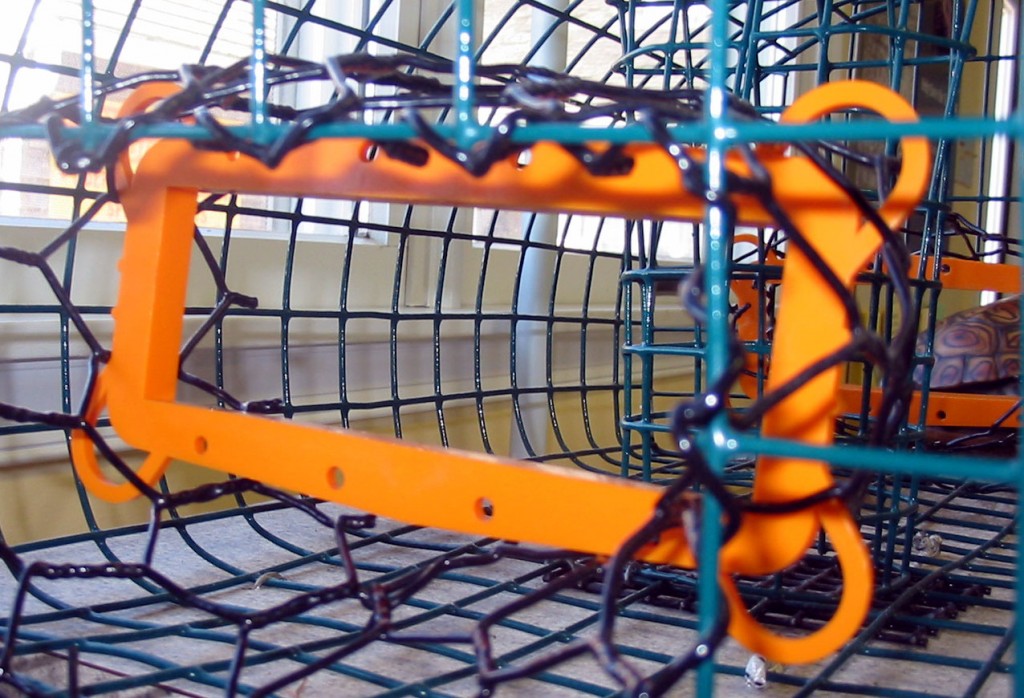Our invention, required by state regulation since 1998, has saved thousands of terrapins from drowning in commercial (“Maryland style”) crab traps.
Being carnivores, terrapins are attracted by the bait fish used in Maryland style crab traps (or “pots”, as they are often called). As a consequence, male and female terrapins of all sizes push their way through the entrance funnels of these crab traps in order to get to the bait. Unlike crabs, which have gills, terrapins have lungs and are air breathers just like people. So, once inside the traps, terrapins usually drown.
In response to this problem, in the mid 1990’s scientists at the Wetlands Institute developed a simple, inexpensive, and effective terrapin excluder for crab traps. The device can be easily fit into the inner (narrow) end of the entrance funnels on crab traps. Fortuitously, our research documented an increase in the number of marketable crabs caught when excluders are used because the reduced size of the inner funnel opening makes it more difficult for crabs, especially large ones, to find their way out of the trap once they have entered.
Our excluder research was the basis for a regulation in New Jersey (N.J.A.C. 7:25-14.1 and N.J.A.C. 7:25.14.6(c)) that went into effect on January 1, 1998. Since then, all Maryland style crab traps used in salt marsh creeks less than 150 feet wide at mean low tide, or in any man-made lagoon, must be fitted with terrapin excluders. This regulation applies to both commercial and recreational crabbers. Maryland and Delaware have subsequently followed suit by implementing their own terrapin excluder regulations.
For more information regarding terrapin excluder devices, contact the Bureau of Marine Fisheries at (609) 748-2020.

